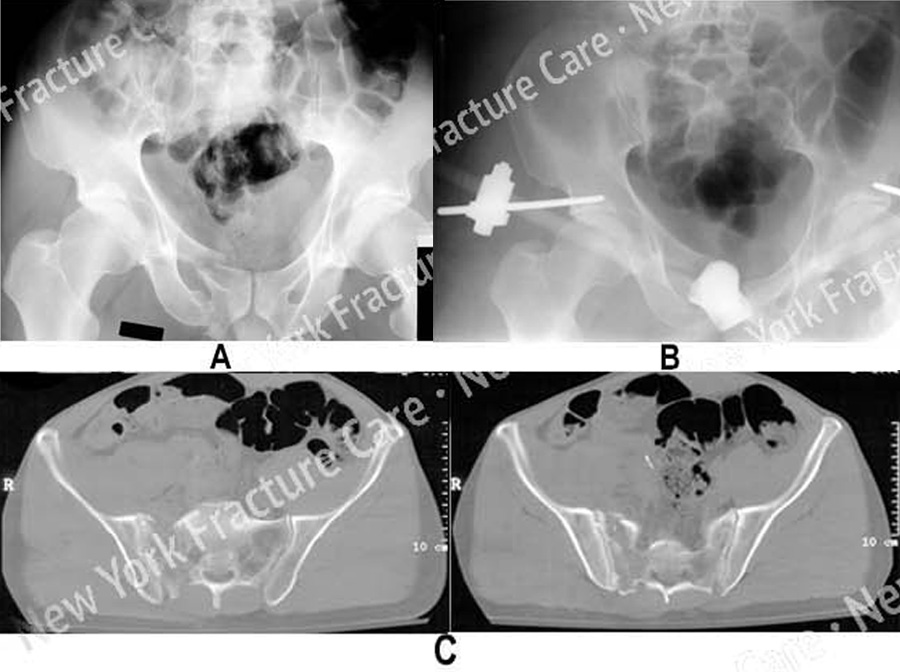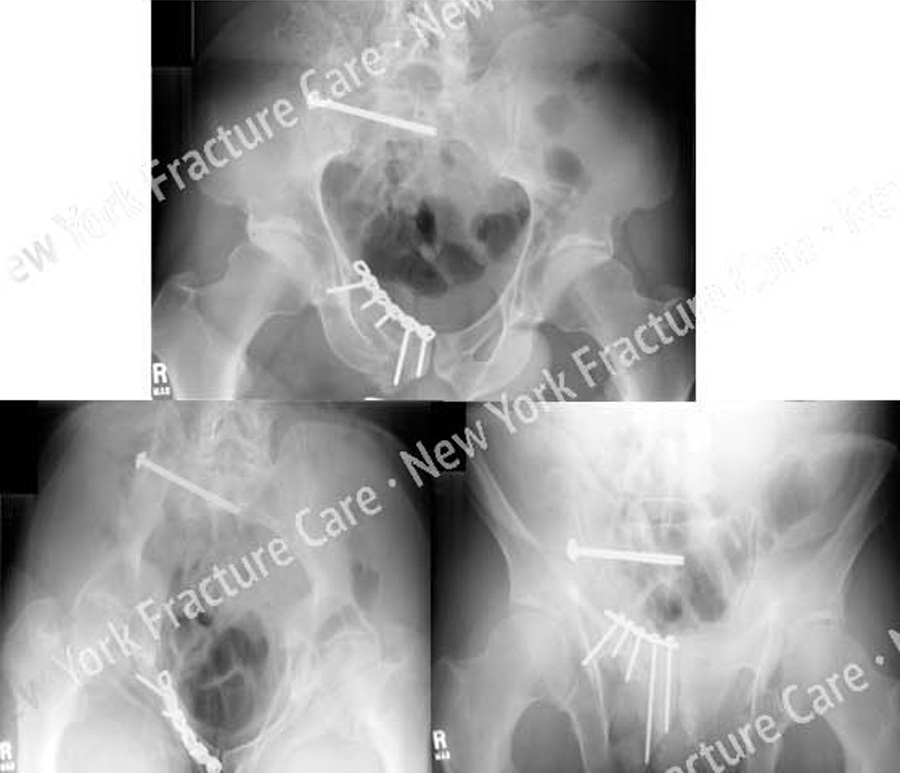Polytrauma patients with orthopaedic injuries
A 48-year-old male was involved in a motorcycle accident, after striking a deer which had entered the roadway.
The patient was brought to our emergency department and radiographs revealed a left-sided pelvic fracture with a sacral and superior and inferior pubic rami fractures and a right-sided calcaneus fracture.
He was placed under the care of David L. Helfet, MD at the Orthopaedic Trauma Service of the Hospital for Special Surgery. Anterior external fixation was placed for initial stabilization of the pelvic fracture.
Open Reduction and Internal Fixation (ORIF) was then performed for the calcaneal fracture with placement of with placement of a plate and screws and supplemental bone graft. Three days later, definitive surgery was performed for the pelvis fracture with reduction of the sacral fracture and placement of a percutaneous screw across the sacroiliac (SI) joint stabilizing the sacral fracture, and the pubic rami fractures were reduced and stabilized with a pelvic reconstruction plate and screws.
He most recently returned for routine follow-up at 6 months following surgery and radiographs revealed healed pelvic and calcaneus fractures and he had fully resumed his occupation and all activities of daily living.
-
Figure A, B, C
(A) Anteroposterior (AP) injury pelvic radiograph (top left image) revealing a left-sided pelvic fracture including a sacral fracture and superior and inferior pubic rami fractures
(B) AP pelvic radiograph following initial closed reduction and placement of anterior pelvic external fixation (top right image)
(C) CT scan images further illustrating the sacral fracture pattern.
-
Figure D
Plain radiographs and CT scan images of the right foot revealing a right-sided calcaneous fracture. -
Figure E
Postoperative AP pelvic radiograph and CT Scan image illustrating illustrating acceptable reduction and placement of hardware. -
-
Tags: Broken Pelvis, David Helfet MD





